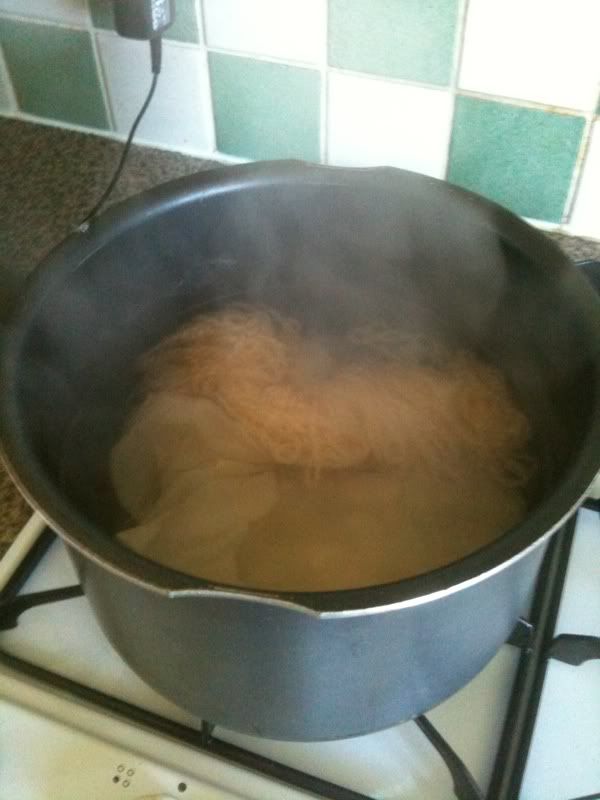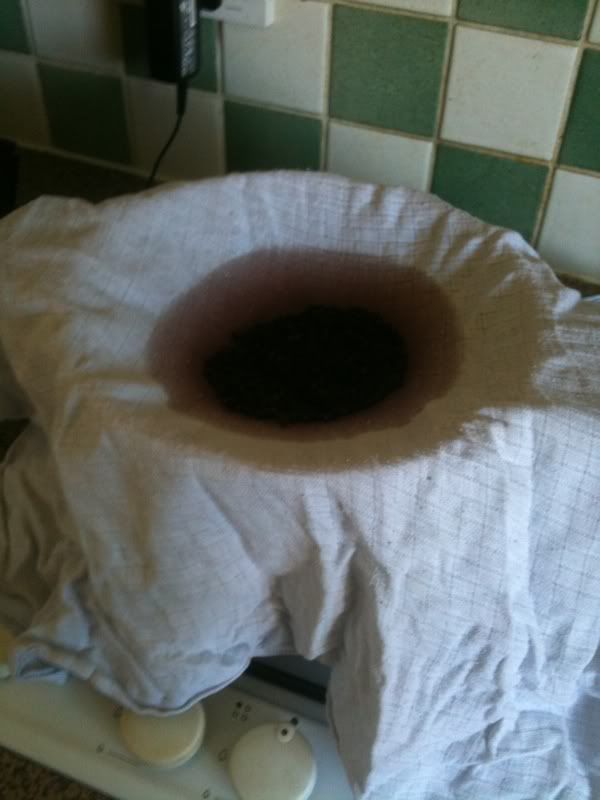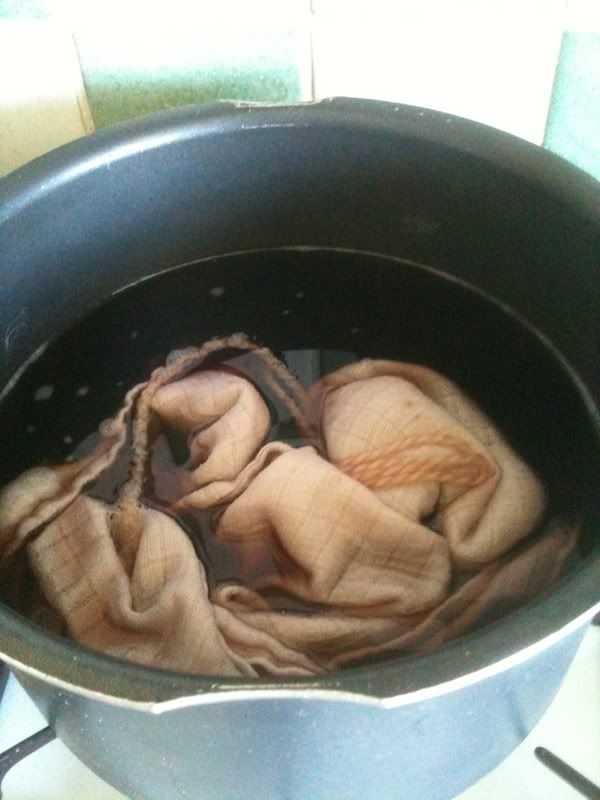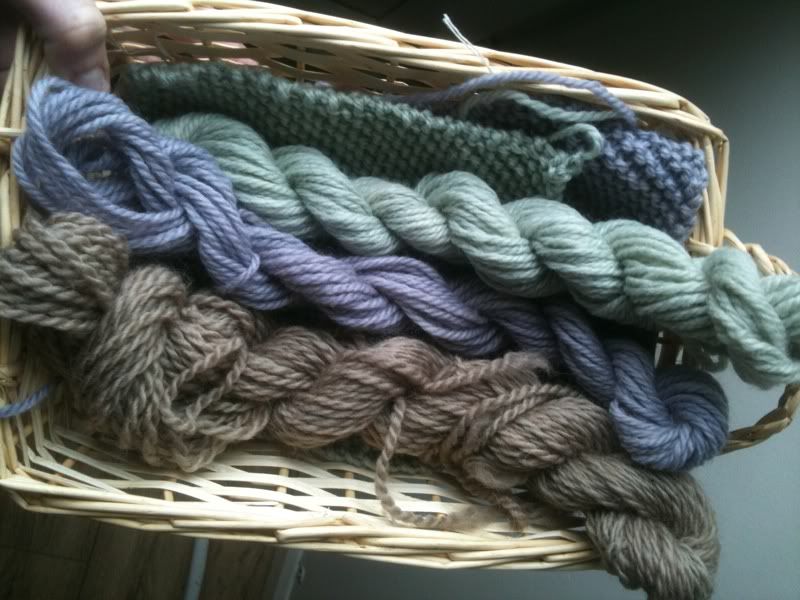Here's how I went about my first attempt at dyeing with dried elderberries:
First they needed soaking so that more dye would be released. I covered 25g with water and added some splashes of vinegar. I hoped this would help the soaking process, and it seemed worth adding anyway as vinegar has mordanting properties with some dyes (including this one). It also tends to push colours toward the red end of the pH spectrum. It just seemed worth doing but it smelt a bit grim as I left it overnnight.
The next morning I mordanted the yarn in alum. Probably only about an oz or two as it was only a sample of berries. I think I overdid the alum as it changed colour more than usual and I was just going for it rather than weighing out, ha. It doesn't seem to have impacted the feel of the yarn any, but I wonder what impact it had on the final result.
Anyway, I simmered the yarn in alum and cream of tarter for about half an hour.
Once that was done I strained the soaking berries. I like to use my daughter's old baby muslins for this ha! They are all sorts of funny colours now, but its worth noting that the unmordanted cotton didn't really take this one at all. Anyway, I like to use these muslins for straining as they are plenty big to then tie up around the dyestuff and chuck in the pot. Much better than having to strain it out later, or scrape it off the yarn (never good). Also makes it easier to dry out dyestuffs which can be reused, eg madder. Don't think these'll be worth reusing though.
Then simmered the lot for about half an hour.Before plonking in the mordanted wool and simmering for another half hour or so. I then left it to soak in the bath for the rest of the day before washing and rinsing. The result was not nearly as bright as those I obtained with the fresh berries. I was actually really excited by the resulting gentle brown, I love brown colours and anyway I was pleased to have a variety of samples for elderberry day, demonstrating the range of colours which can be obtained. But I reckon any saxon woman worth her salt would reckon I'm completely bonkers for putting so much effort into sending yarn natural sheep colour! Brownish sheep would have been much more common than pure white before intensive farming.
Nevertheless, I am yet to dye a colour I don't like. The three samples below are, top to bottom...
1. Fresh elderberry + alum + bicarbonate of soda
2. Fresh elderberry + alum
3. Dried elderberries + vinegar + alum
Next up, I have 100g of dried elderberries, same of yarn, loads of salt and maybe some bicarb too...!





thank you for posting this, lots of information and I love the results :)
ReplyDeleteI was wondering what the recipe is for fresh elderberries? Thanks so much!
ReplyDelete